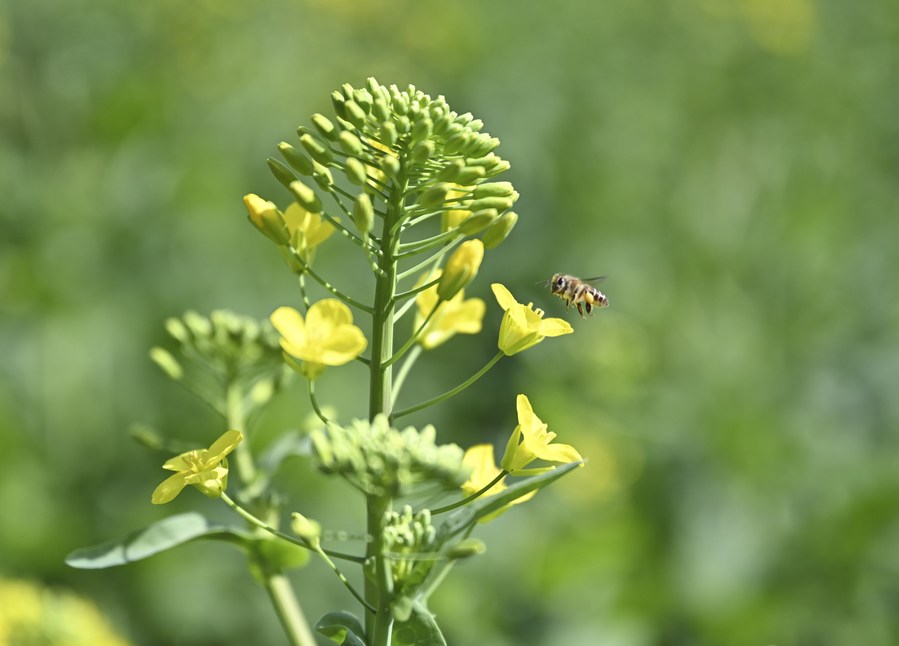

A bee sips honey from a cole flower in Zhuzhong Village of Minqing County, Fuzhou City, southeast China's Fujian Province, Feb. 19, 2021. (Xinhua/Song Weiwei)
Chinese researchers have discovered that honey bees must learn the waggle dance from adult bees at an early age to accurately transmit information.
Honey bees use a complex form of spatial referential communication. Their "waggle dance" communicates the direction, distance, and quality of a resource to nestmates by encoding celestial cues, retinal optic flow, and relative food value into motion and sound within the nest.
To study the language of honey bees, a research team led by Tan Ken, a researcher from the Xishuangbanna Tropical Botanical Garden under the Chinese Academy of Sciences created a bee colony composed of young bees. While the bees in the colony have the benefit of a comfortable growth temperature and a stable food source, they lack the opportunity to learn the waggle dance from adult bees, unlike young bees growing in natural nests.
The team first marked the bees in the experimental colony and natural bees preparing to leave the nest one by one. When they returned to the nest and started to dance, the camera recorded their waggle dances, and analyzed the dance duration, angle, swing times and other indicators.
The results showed that the experimental bees had obvious defects when dancing. Information such as food location, distance and quality conveyed by the waggle dancer was inaccurate, especially the information of the distance between the honey source and the hive.
Social learning, therefore, shapes honey bee signaling, as it does communication in human infants, birds, and multiple other vertebrate species.
The researchers published their findings in the journal Science. (Xinhua)

86-10-68597521 (day)
86-10-68597289 (night)

52 Sanlihe Rd., Xicheng District,
Beijing, China (100864)

